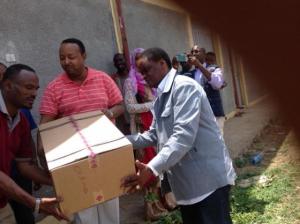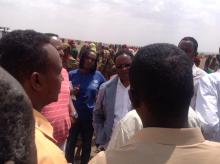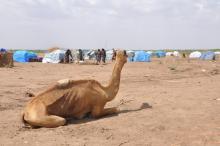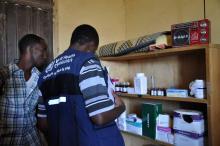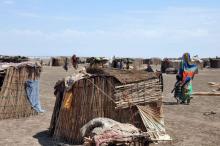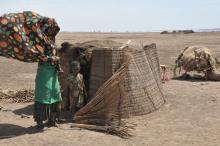WHO Responds to El Niño Driven Emergency in Ethiopia
WHO has been providing health and nutritional support to communities affected by health impact of increasing food insecurity and malnutrition in Sitti zone of Somali Regional State. Failure of rain for two consecutive seasons in many parts of the country is caused by the global El Niño phenomenon, resulting in a slow onset of natural disaster, according to a joint statement by His Excellency Mitiku Kassa, Secretary of the National Disaster Prevention and Preparedness Committee and Mr. John Aylieff, Acting Humanitarian Coordinator for Ethiopia.
The joint statement reveals that over 8 Million people require emergency food assistance until the end of the year, 12.5% of whom are moderately malnourished children, pregnant women and lactating mothers needing supplementary feeding. Around 48,000 are estimated to be severely malnourished children who need treatment until the end of the year. The statement reports that the Ethiopian government has taken the lead to the emergency response so far, allocating USD 192 million and calls for increased engagement from partners.
WHO Ethiopia has been partaking in rapid assessments and responding to the nutritional and health emergency in Sitti Zone, one of the highly impacted areas with 400,000 people exposed to shortage of food and water. WHO emergency technical support team has been deployed in the Zone and strengthened the emergency technical coordination and response activities. The team has been closely working with the region to enhance technical capacity of supplementary feeding and stabilization centers in the affected districts. The team also supports monitoring of emergency health and nutrition response activities.
WHO handed over a Diarrheal Disease Kit (DDK) to the Sitti zone health bureau. Technical, financial and Logistics (vehicles) backing was also provided for measles vaccination campaign that integrated nutritional screening conducted in all the districts. The campaign helped to admit children with severe acute malnutrition into therapeutic feeding programs.
As reported by the Ethiopia Humanitarian Country Team (EHCT) El Niño weather condition affected the rain fall patterns causing delays on the onset of major rain fall seasons both in agricultural and pastoralist areas. WHO is engaged to reach out more affected areas of the country and is monitoring and strengthening preparedness and response to climate sensitive diseases including Meningitis, Dengue fever, Yellow Fever, AWD and Rift valley fever, which are reported to have increased transmission due to the impact of the El Niño weather.
Currently areas including southern Tigray, eastern Amhara, Afar, eastern part of Southern Nations and Nationalities Peoples Region, Sitti zone of Somali Regional State, East and West Hararge, Arsi and West Arsi, and lower Bale zones of Oromia are reported to have been affected by the El Nino driven drought.
For more information, please contact
Kibnesh Chala
Communications Officer
chalak [at] who.inttarget="_blank"
Photo: WHO Ethiopia/Kibnesh C.




